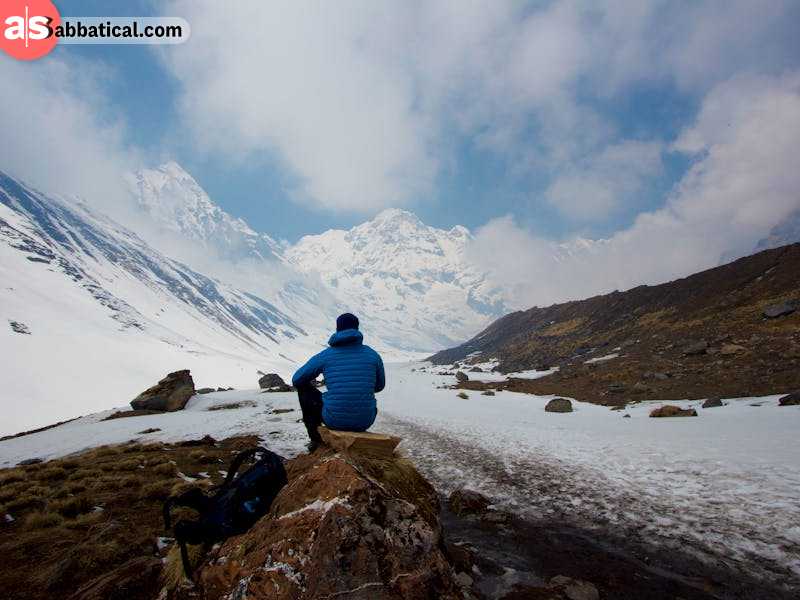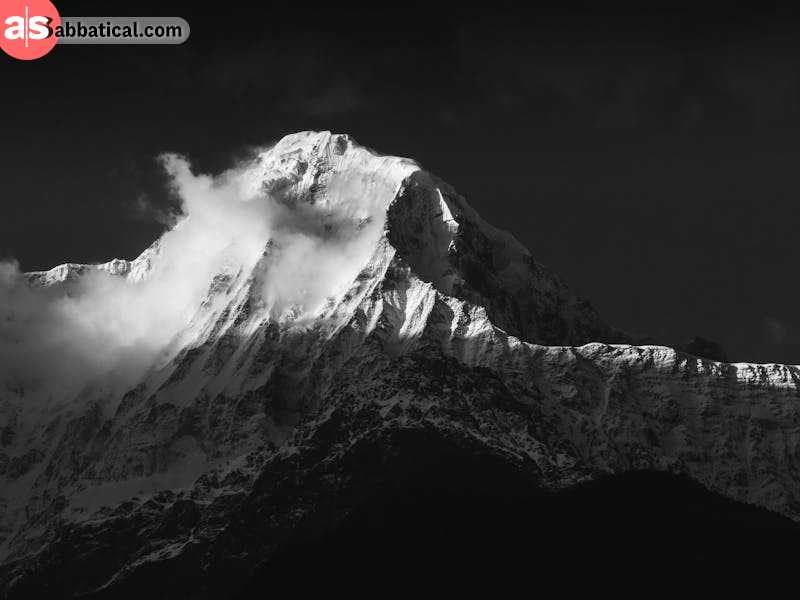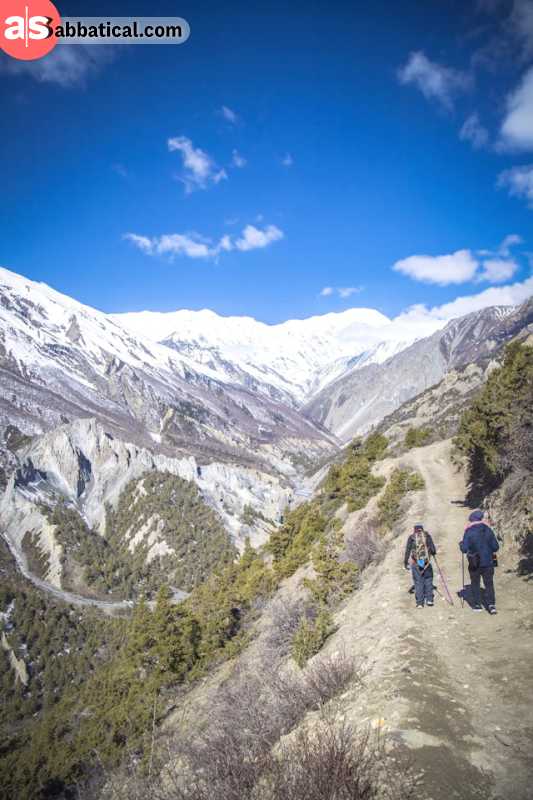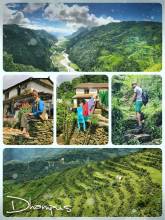Annapurna Base Camp Trek: A Complete Travel Guide
The 10th tallest peak in the world, Mount Annapurna, rising to a height of 8091 meters, is situated in the Gandaki Province in north-central Nepal , along the Annapurna trekking paths. The Annapurna Base Camp Trek, one of the most well-liked trekking routes worldwide, offers visitors a genuine glimpse into Nepal's breathtaking natural surroundings.
, along the Annapurna trekking paths. The Annapurna Base Camp Trek, one of the most well-liked trekking routes worldwide, offers visitors a genuine glimpse into Nepal's breathtaking natural surroundings.
Ascending to Annapurna Base Camp at an elevation of 4130 meters, the trek begins by winding through lovely forests and terraced rice farms. One of the rare walking routes with distinctive plants and animals that are mostly wooded is the ABC trek.
It provides a large landscape, terraced fields, dense woods of rhododendrons, deep rivers, and magnificent mountain ranges. In the Annapurna region, there is a significant Gurung and Magar population. For travelers, their tranquil Buddhist customs and culture are a breath of fresh air. It also allows trekkers to get a firsthand look at the culture.
You'll definitely feel as though you're setting out on one of the most amazing adventures when you go on ABC Trek. Setting off on the Annapurna Base Camp Trek is an incredible chance to push your physical limits, take in the breathtaking scenery, and discover the region's rich cultural diversity.

Why Should You Trek Annapurna Base Camp?
- The amazing up-close perspective of Dhaulagiri, Machhapuchhre, and Annapurna.
- The walk is unique in and of itself because of the wide variety of plants and animals that you will encounter.
- Learn about the Gurung and Magar cultures.
- Bathe naturally in Jhinu's hot springs.
- Wander through the mesmerizing bamboo, rhododendron, and oak forests.
- Savor nature in Annapurna Conservation Area.
Permits necessary for Annapurna Base Camp Trek
Permissions are needed for hiking the Annapurna Base Camp Trek. Due to the trek's location within the Annapurna Conservation Area, the Conservation Area Permit is required. The Trekkers Information Management System Card is an additional permit needed for the Annapurna Base Camp Trek (TIMS card).
The Nepal Tourism Board, Bhirkuti Mandap, is the place to get an (Annapurna Conservation Area Project) ACAP permit. In contrast, the TAAN Head Office at Ganeshthan Marg is where TIMS card is issued. Furthermore, Pokhara is the source for both permissions.
You are suggested to take with you the necessary documentation which might include:
- Passport-sized pictures.
- Copies as well as the original passport.
- Route or itinerary.
- Travel insurance specifics.
- Points of departure and entry.
- The start and end dates of your journey.
- Emergency Contact information (both local and foreign).
The price of an ACAP (Annapurna Conservation Area Permit) is:
- For foreigners: around $30
- NPR 1000 for citizens of SAARC
The cost of the Trekkers' Information Management System (TIMS) card is as follows:
- Individual hikers: $20 (about)
- Trekkers arranged by a hiking agency: around $10
Trekking Route on the Annapurna Base Camp Trek
The journey to Pokhara, the entry point to the Annapurna region, normally starts with a bus or plane from Kathmandu. The best places to start and finish the ABC Trek are Kande and Ghandruk if you're going to walk it alone, without combining it with other routes.
Trekkers often combine the ABC trip with the Poon Hill trek if they wish to combine it with one of the other routes. In this instance, you begin in Nayapul. There are many routes based on how long the trek is going to take and any side excursions you might wish to take.
With breathtaking views of Machapuchare and Mardi Himal, this is a brand-new trekking path. The route begins in Kande or Phedi, both close to Pokhara, and travels through verdant forests, and traditional villages, with the ABC trek.
With more routes offering a range of choices, each with unique landscapes and cultural significance you have a chance to create and select the best route based on your capability and interest.

Best Season to Trek Annapurna Base Camp
With the following seasons: winter, spring, summer, autumn, and monsoon. Consequently, March through May in the spring and September through November in the autumn are the ideal seasons to go trekking in Annapurna Base Camp or other trekking like Manaslu Circuit Trek.
Spring (March to May):
When the temperature is just right: not too hot or cold, spring in the Annapurna region is very colorful. Botanists should visit the route in the spring, when an abundance of exotic flowers, including red and white rhododendrons, will blossom in the area.
Trekking is best during this season because of the clear, calm weather and sky. This is when wildlife is most active, so you might be able to see different kinds of birds and other creatures.
Summer/Monsoon (June to August):
The trail is usually muddy, slippery, and challenging to negotiate because of the monsoon's constant rain. The mountain and landscape views are therefore not as enticing as they are in the autumn and spring.
In addition, the road is infested with insects and leeches, which may make your trip unpleasant. The summer months to avoid are June through August.
Fall / Autumn (September to November):
Autumn is the ideal trekking season in Nepal, and the Annapurna Base Camp Trek is no different. In Nepal, the autumn brings happiness and wealth as well as the festival season. The springtime brings blossoming flowers to verdant forests.
The range of temperatures is between 16 and 22 degrees Celsius, or 54 and 68 degrees Fahrenheit. The pleasant temperatures and good visibility provide beautiful views of the surrounding mountains.
Winter (December to February):
Winter is another trekking off-season. Because of the unpredictable nature of snowfall, pathways can change dramatically in a matter of hours. Traveling from Deurali to Machhapuchhre Base Camp in January requires you to exercise caution due to the possibility of an avalanche. Avalanches are common in this area.
Though the temperature drops more than usual, it is undoubtedly the low season with bright skies. At a higher altitude, you will need to go through a lot of snow and wear warmer gear.
Annapurna Base Camp Trek Packing List
It's possible that novice trekkers are unaware of the equipment they'll require. Here is a detailed list of treks to Annapurna Base Camp to help you get ready for your trip. Packing appropriately for the Annapurna Base Camp (ABC) trek is essential to ensure your comfort, safety, and enjoyment during the journey.
Trekking Gear, Accessories, and Equipment
- Trekking poles
- sleeping bag
- Hiking backpack
- Headlamp with additional batteries
- Raincoat Thermosets
- Water bottle, face mask, games
- Book, and diary
- Crampons.
- Optional navigational equipment
- Liner for sleeping bags (optional)
- Daypack cover
Clothing
- Sunglasses
- Knit cap that doubles as a buff, neck warmer
- Brimmed Hat or Sun Cap
- Headscarf
- Minimal Weight Thermal Tops
- Fleece Jacket
- Sports Bra (for women)
- Insulated jacket
- Down jacket
- Wool or fleece gloves
- Hiking Footwear
- Walking Socks
Annapurna Base Camp Trek Difficulty
The Annapurna Base Camp Trek is rated as having a moderate degree of difficulty. Regardless of your level of competence, this trek provides an extremely gratifying and hard experience. Trekkers can easily complete this trek if they are averagely fit and can walk uphill and downhill for 6 to 8 hours at higher elevations.
Particularly at higher elevations, the weather in the Annapurna region can be erratic. Trekking seasons include spring and autumn when visibility is often good due to more consistent and clear weather. Higher elevations have sharp drops in temperature, particularly at night, and fast weather changes are common.
The altitude of the mountainous area is the next thing we encounter. It's hard to catch your breath because of the low oxygen level. In the Annapurna Region, altitude sickness is not as common. It should also not be dismissed, though.
The length of the ABC Trek is usually lengthier and varies based on the exact route traveled and the trekker's pace. Slower ascents and more rest days are possible with a longer duration.
FAQs:
Is the Annapurna Base Camp Trek difficult?
When compared to the Everest Base Camp journey, the Annapurna Base Camp walk is comparatively easy. Since the trek is just a lengthy walk at low elevations, trekkers do not need technical competence like rock climbing and mountaineering skills.
When walking to Annapurna Base Camp, how long do we walk each day?
Four to six hours a day on average are spent walking. Your working day can occasionally just last three quarters. You spend six or seven hours walking on pleasant, simple paths.
When is the ideal period to trek to Annapurna Base Camp?
In general, spring (March to May) and fall (September to November) are the optimum seasons to walk to Annapurna Base Camp (ABC).
Does the Annapurna Base Camp Trek require oxygen?
Oxygen is typically not used because the Annapurna Base Camp trip route allows for ample acclimatization. However, in case of emergency respective agency can supply.
When traveling to Annapurna Base Camp, are there ATMs nearby?
Along this walk route, there are no ATMs. Pokhara or Kathmandu must provide you with enough cash. In these cities, there are plenty of ATMs.
Is hiring guides required?
That is up to you. You may trek this trail alone if you'd like. Alternatively, you can choose not to hire a tour at all or hire a guide and a porter independently of an agency. Nevertheless, it can be a little difficult to go without a guide.













